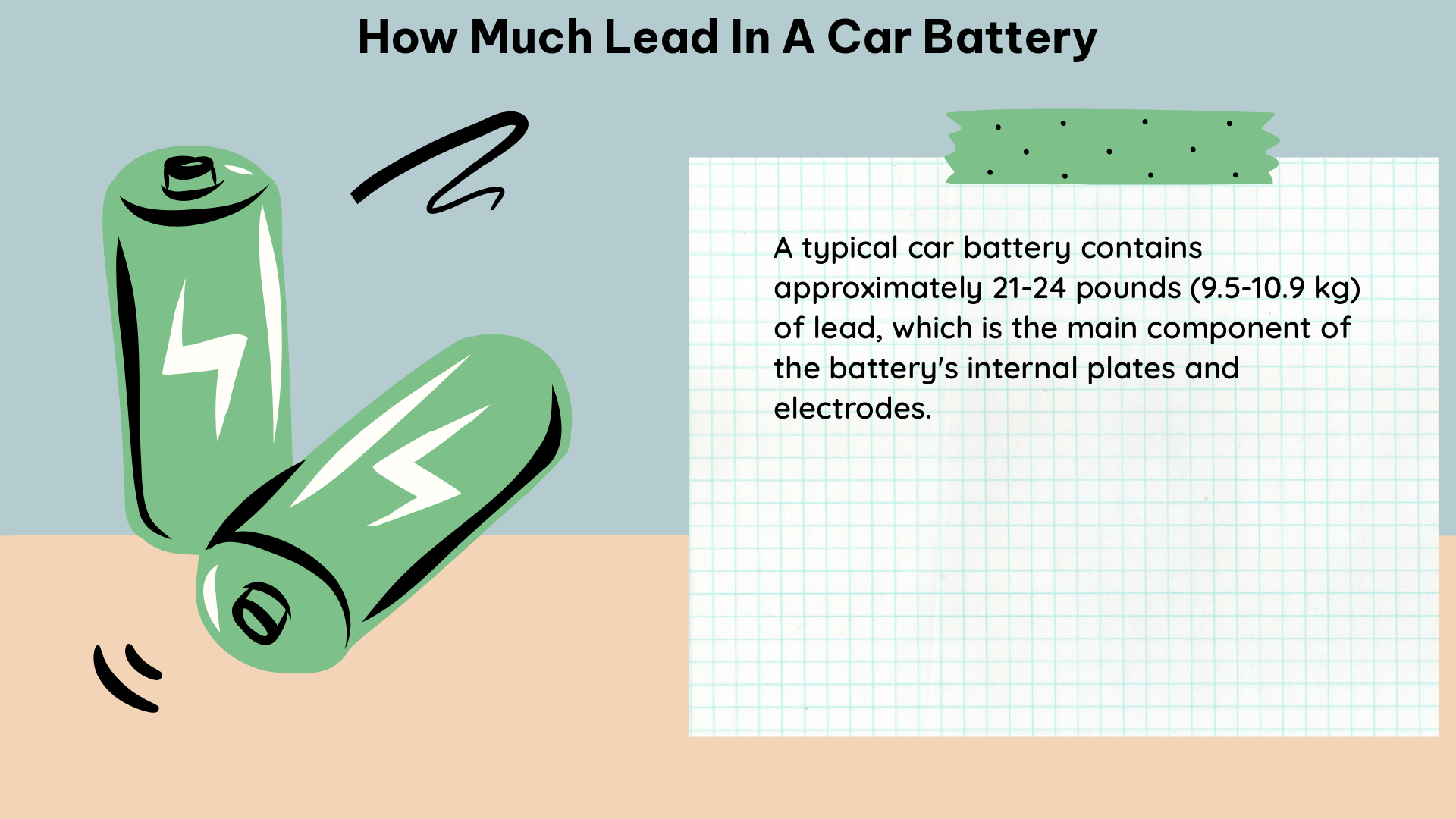A typical car battery contains approximately 21 pounds (9.5 kg) of lead, which is a significant amount. The lead in a car battery is an essential component that plays a crucial role in the battery’s function and performance. Understanding the amount of lead in a car battery is important for various reasons, including environmental concerns, battery recycling, and maintenance.
Composition of a Car Battery
A car battery is primarily composed of lead, sulfuric acid, and other materials. The lead in a car battery is typically in the form of a lead-acid alloy, which is a mixture of lead and other elements such as antimony, calcium, and tin. The lead-acid alloy is used to create the battery’s positive and negative plates, as well as the battery’s internal structure.
The amount of lead in a car battery can vary depending on the battery’s size and type. Larger batteries, such as those used in heavy-duty vehicles, may contain more lead than smaller batteries used in compact cars. Additionally, different battery technologies, such as absorbed glass mat (AGM) or enhanced flooded batteries (EFB), may have slightly different lead compositions.
Importance of Lead in Car Batteries

Lead is a crucial component in car batteries for several reasons:
-
Energy Storage: The lead-acid chemistry in car batteries allows for the efficient storage and release of electrical energy, which is essential for starting the vehicle and powering various electrical components.
-
Durability: Lead is a durable material that can withstand the harsh conditions inside a car battery, such as vibrations, temperature changes, and chemical reactions.
-
Recyclability: Car batteries are highly recyclable, with up to 99% of the lead in a battery being recovered and reused in new batteries or other lead-based products.
Environmental Considerations
While lead is an essential component in car batteries, it is also a heavy metal that can have negative environmental and health impacts if not properly managed. The extraction, processing, and disposal of lead can release harmful substances into the environment, which is why proper battery recycling and disposal are crucial.
To address these concerns, various regulations and initiatives have been implemented to promote the responsible management of lead-acid batteries. For example, the EU Battery Directive requires the collection and recycling of at least 65% of all lead-acid batteries placed on the market.
Conclusion
In summary, a typical car battery contains approximately 21 pounds (9.5 kg) of lead, which is a significant amount. This lead is an essential component that enables the battery’s energy storage and durability, but it also requires careful management to mitigate environmental and health risks. Understanding the amount of lead in a car battery is crucial for battery maintenance, recycling, and environmental stewardship.
References:
– How much lead in a car battery? – AllisChalmers Forum. https://www.allischalmers.com/forum/how-much-lead-in-a-car-battery_topic155948.html
– Methodology – Lead the Charge. https://leadthecharge.org/scorecards-summary/methodology/
– 8 battery metrics that really matter to performance | Sila. https://www.silanano.com/insights/8-battery-metrics-that-really-matter-to-performance
– Blood lead level among battery factory workers in low and middle-income countries: Systematic review and meta-analysis. https://www.ncbi.nlm.nih.gov/pmc/articles/PMC9580401/
– How Much Lead is in a Car Battery? https://www.batteryjunction.com/how-much-lead-is-in-a-car-battery.html

The lambdageeks.com Core SME Team is a group of experienced subject matter experts from diverse scientific and technical fields including Physics, Chemistry, Technology,Electronics & Electrical Engineering, Automotive, Mechanical Engineering. Our team collaborates to create high-quality, well-researched articles on a wide range of science and technology topics for the lambdageeks.com website.
All Our Senior SME are having more than 7 Years of experience in the respective fields . They are either Working Industry Professionals or assocaited With different Universities. Refer Our Authors Page to get to know About our Core SMEs.